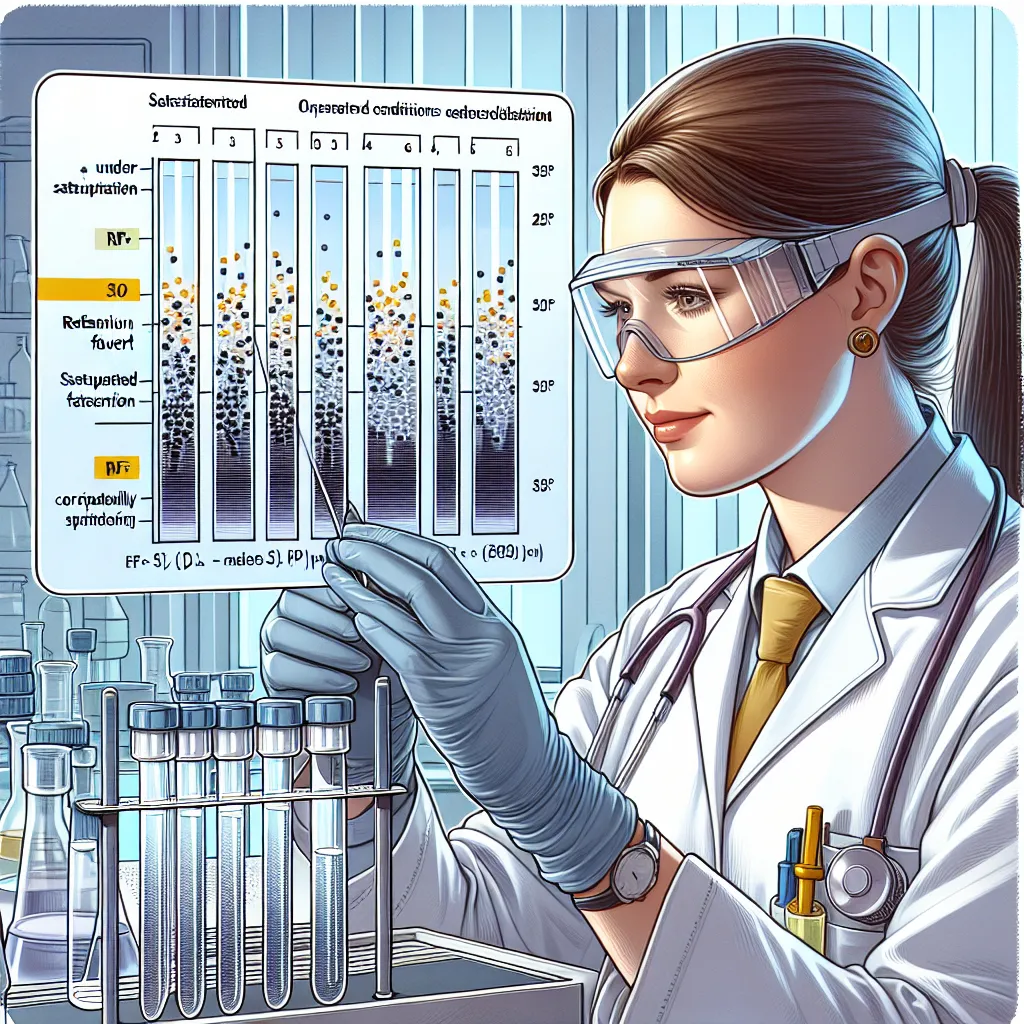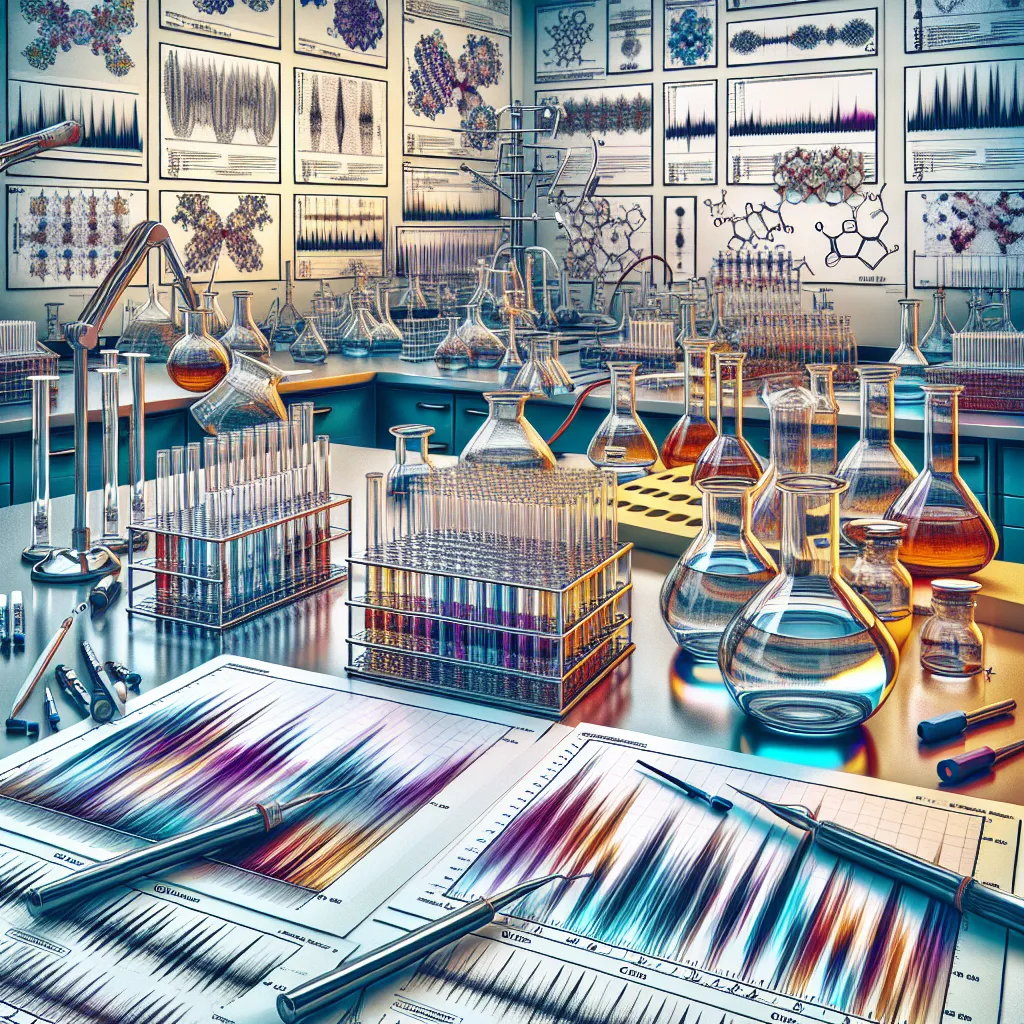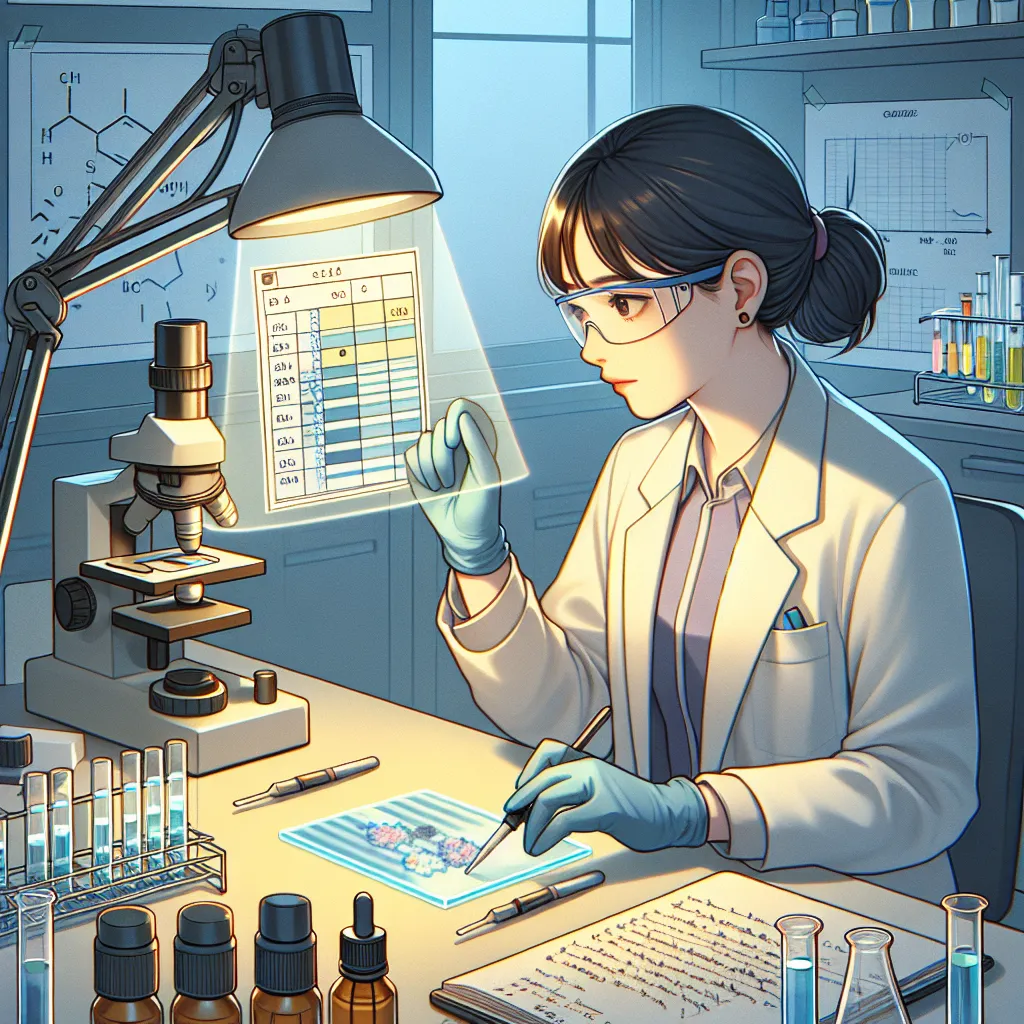Ask AI on The Internet
Question: DISCUSS THE RESULTS OF DETERMINING THE UNKNOWN USING TLC. THE SAMPLES TESTED BY THE TLC VALINE WITH RF OF 0.69, LYSINE WITH RF 0.11, TRYPTOPHAN WITH RF OF 0.79, UNKNOWN WITH RF 0.78 , UNKNOWN B WITH RF 0.13 AND 0.72. INTEXT REFERENCE
Thin layer chromatography (TLC) is a technique commonly used in biochemistry for identifying substances within a mixture, due to its straightforward procedure and quick results. The Rf (retention factor) is a measure of how far a compound travels on the TLC plate relative to the solvent front. It is obtained by dividing the distance the sample migrated by the distance the solvent front migrated. Although each compound has an intrinsic Rf under certain conditions, this value can change under different experimental conditions. Looking at the Rf values given for the samples, we can start to make some comparisons and possibly identify the unknown samples: 1. Valine with Rf of 0.69: This amino acid seems to have a medium affinity for the stationary phase, hence it travels relatively far with the solvent. 2. Lysine with Rf of 0.11: This amino acid has a high affinity for the stationary phase and therefore travels much less. 3. Tryptophan with Rf of 0.79: This amino acid has a low affinity for the stationary phase and therefore travels very far. In reviewing the unknowns: Unknown A has an Rf of 0.78, which is very close to the Rf of Tryptophan (0.79). This suggests a high likelihood that the Unknown A is Tryptophan, or at least a compound with very similar polarity. On the other hand, Unknown B shows two spots with Rf 0.13 and 0.72. The first spot is close to Lysine (0.11) indicating that one component of the unknown sample could be Lysine or a compound of similar polarity. The second spot corresponds more closely with Valine (0.69). This indicates that the sample might be a mixture of two compounds, possibly Lysine and Valine or compounds with similar polarities. Keep in mind that TLC results should be supplemented with additional testing methods to confirm any findings, as factors like the solvents used, temperature, and plate type will influence Rf values. Other tests such as melting point, infrared spectroscopy, nuclear magnetic resonance, or mass spectrometry would help to confirm the identity of unknowns.
A new large language model has been made available since this question was asked.
To generate an updated answer from the new model, click the button below.
Think your answer is better than the AI's? Post it below.
Other Most Relevant Posts:
 Identification of Unknown Compounds using TLC: Comparative Analysis of Valine, Lysine, Tryptophan, and Two Unknown Samples
Identification of Unknown Compounds using TLC: Comparative Analysis of Valine, Lysine, Tryptophan, and Two Unknown Samples
 Unraveling the Secrets: Analysis of TLC Sample Test Results for Valine, Lysine, Tryptophan, and Unknown Compounds
Unraveling the Secrets: Analysis of TLC Sample Test Results for Valine, Lysine, Tryptophan, and Unknown Compounds
Question Tags
If you want your question answered by an AI, click here.





Post your own comment: